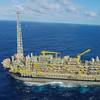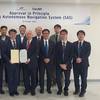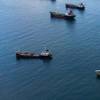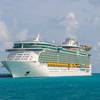The Manitowoc Company, Inc., a diversified, multi-industry capital goods manufacturer headquartered in Manitowoc, Wisconsin, today will ring the closing bell at the New York Stock Exchange to celebrate its centennial anniversary. The company was founded on this date in 1902 as a ship-building and ship-repair operation serving the Great Lakes maritime industry.
"Today, The Manitowoc Company celebrates a century of success thanks to our innovative products, strategic acquisitions, global expansion, and thousands of loyal employees," said Terry D. Growcock, president and chief executive officer. "Over the past ten decades, the diligent work ethic and inventiveness of our talented and resourceful employees have been a driving force in our remarkable growth from a modest lakeside shipyard to a vibrant multi-national organization. I am also proud to acknowledge the fact that our workforce includes hundreds of second and third-generation employees. Such loyalty will help Manitowoc continue to thrive in the years ahead."
The Manitowoc Company was founded in 1902 by Elias Gunnell, Charles West, and Lynford Geer as a shipbuilding organization. As its reputation for quality grew through-out the maritime industry, Manitowoc became a major supplier of freighters to the U.S. Government during World War I. In 1925, the company leveraged its steel fabricating and welding expertise to manufacture cranes in addition to ships. And beginning in 1940, the company was awarded a series of contracts from the U.S. Navy to build 28 sub-marines and other vessels for World War II. To this day, Manitowoc holds the unique distinction of being the only inland shipyard to have ever built submarines for military service.
When World War II ended, Manitowoc recognized an opportunity to refocus its war-time manufacturing resources on domestic and commercial refrigeration equipment. This eventually led to the ice machines it currently produces on three continents. Today, Manitowoc has grown into a $1.3-billion enterprise with more than 6,000 employees and 25 manufacturing facilities in six countries, while retaining its corporate headquarters and two of its flagship businesses in its namesake city.
Featured videos

Send in the Drones (to deep, dark, confined maritime spaces)

Taking the First Step Toward Autonomy
October 2024
 Read the Magazine
Read the Magazine

 Read the Magazine
Read the Magazine
This issue sponsored by:

Examination of the Maritime Expanded Gray Zone
Subscribe for
Maritime Reporter E-News
Maritime Reporter E-News is the maritime industry's largest circulation and most authoritative ENews Service, delivered to your Email five times per week









